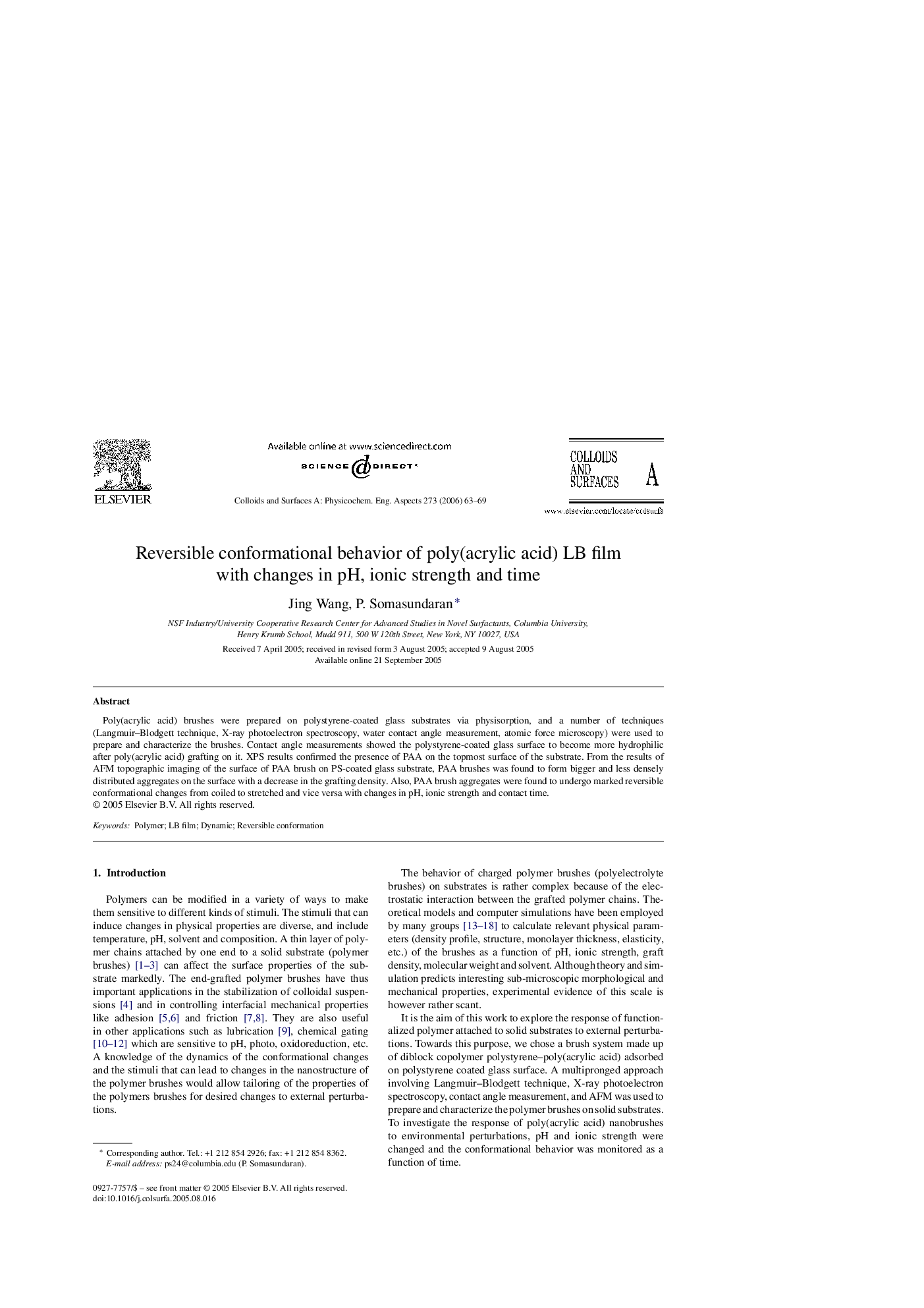| Article ID | Journal | Published Year | Pages | File Type |
|---|---|---|---|---|
| 598631 | Colloids and Surfaces A: Physicochemical and Engineering Aspects | 2006 | 7 Pages |
Poly(acrylic acid) brushes were prepared on polystyrene-coated glass substrates via physisorption, and a number of techniques (Langmuir–Blodgett technique, X-ray photoelectron spectroscopy, water contact angle measurement, atomic force microscopy) were used to prepare and characterize the brushes. Contact angle measurements showed the polystyrene-coated glass surface to become more hydrophilic after poly(acrylic acid) grafting on it. XPS results confirmed the presence of PAA on the topmost surface of the substrate. From the results of AFM topographic imaging of the surface of PAA brush on PS-coated glass substrate, PAA brushes was found to form bigger and less densely distributed aggregates on the surface with a decrease in the grafting density. Also, PAA brush aggregates were found to undergo marked reversible conformational changes from coiled to stretched and vice versa with changes in pH, ionic strength and contact time.
